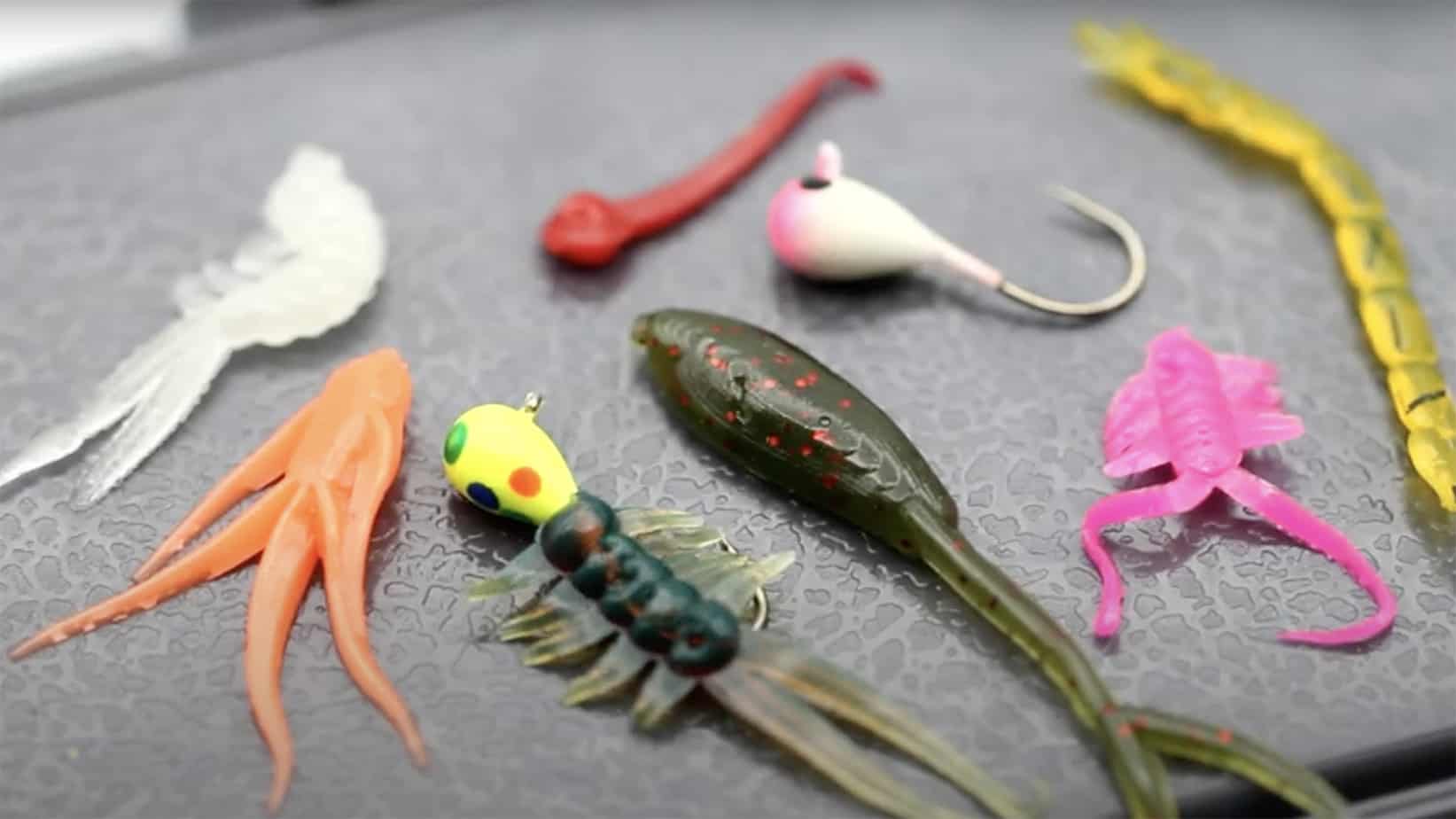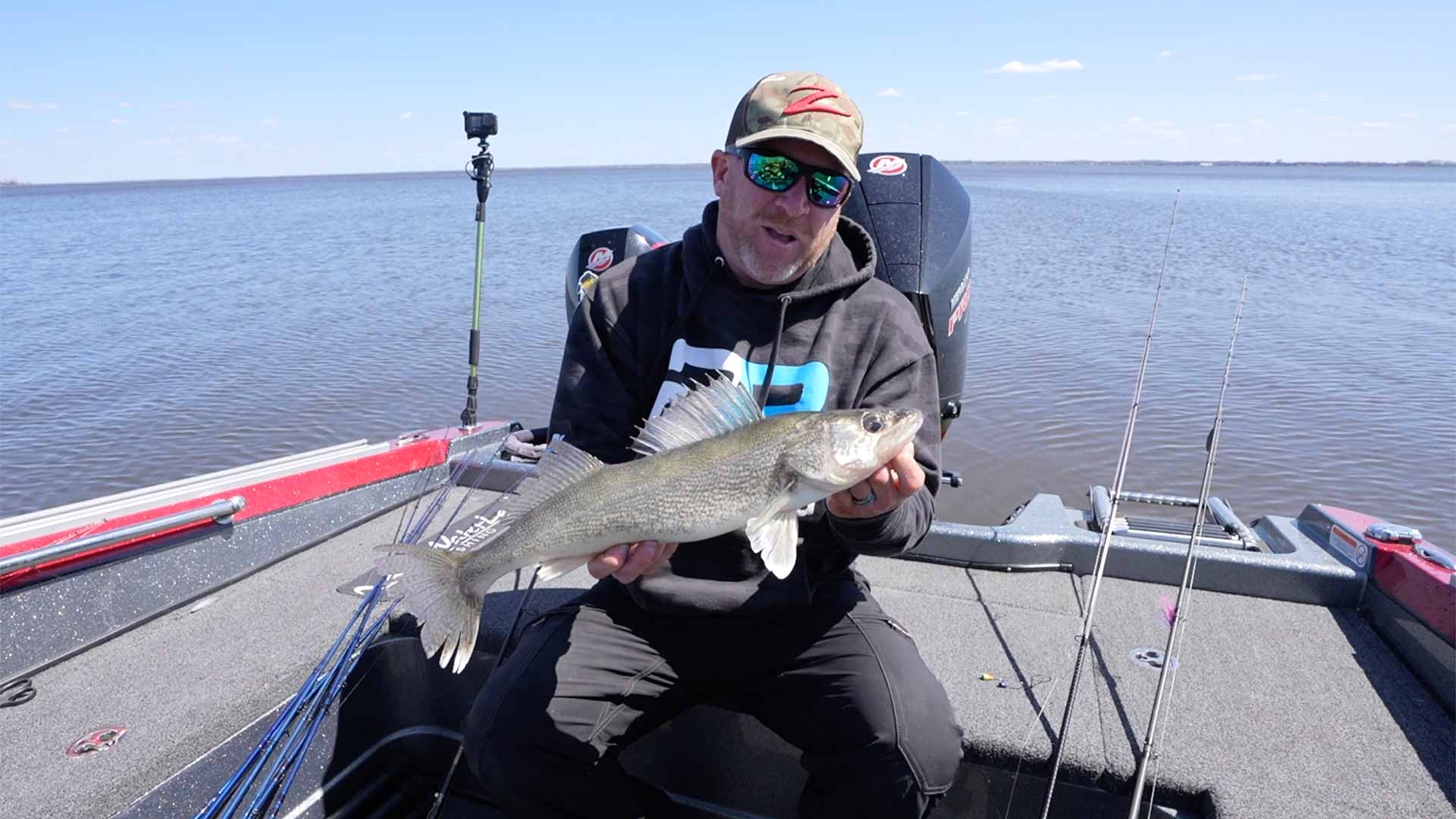Over the years there has been a lot of interesting trends in ice fishing for panfish. Originally anglers started out with aggressive baits and methods and then over time made a switch to subtle tactics for panfish.
Things are starting to come full circle and what I mean by that is if you were to take a look back about 10 years ago. Power fishing for panfish just started to become popular. Before power fishing it was real delicate presentations with light line and small baits.
Then power fishing took over and anglers started to fish fast and aggressive. They would often drill a bunch of holes, stay on the move, use plastics and other aggressive style baits.
Tungsten had just arrived on the scene and baits like the NorthLand’s Tungsten Hard-Rock Mooska jig and other tear drop patterns became very popular.
With the power fishing method anglers were often using heavier line like 3 – 4lb monofilament and stiffer rods.
Now anglers today have started making the switch back to real subtle tactics for panfish.
It involves 1 – 2 lb test mono, with micro jigs and ultra noodle rods.
A lot of ice fisherman are going back to lead vertical jigs for panfish. This is because they often offer a smaller profile and move less water than horizontal style tungsten jigs. The jig size may be very similar but because of how it sits in the water the presentation appears smaller.
It all happened over the past ten years and it has been really interesting to see how anglers have adapted and changed tactics over time.
In this article, we will explore some interesting trends in panfish fishing, particularly in the context of ice fishing. Over the past decade or so, there has been a shift in fishing techniques and gear preferences. What’s fascinating is that many of these changes have brought us back to some tried and true methods from the past. Let’s dive in and discover these subtle tactics for panfish.
The Rise of Power Fishing
Around five to ten years ago, the power fishing mentality was dominant in the panfish ice fishing scene. Anglers were embracing tungsten as a popular choice for their fishing gear. Tungsten allowed for the use of heavier line, which meant anglers could forgo the traditional three or four-pound test monofilament and opt for more aggressive fishing techniques.
Soft plastics became a go-to bait for power fishing. Anglers would fish aggressively through the ice holes, often catching the first, biggest, highest, and fastest fish. If the fish weren’t biting, they would move on to a new hole and find a new group of fish. This aggressive approach was effective in many cases, especially for targeting larger fish.
The Evolution Back to the Basics
However, in recent years, there have been some changes in the fishing landscape. Factors such as the presence of zebra mussels and the efforts of lake associations to clean up and clear up the water have led to increased fishing pressure. With more anglers on the ice and more skilled anglers at that, the power fishing mentality has started to shift.
What we are witnessing now is a return to the basics, where old techniques are becoming new again. Many anglers are reverting to using one-pound monofilament line instead of heavier options like tungsten. The use of lead weights is also making a comeback, replacing tungsten in some cases. Additionally, vertical jigging with a teardrop jig is gaining popularity over horizontal jigging.
The Advantages of One-Pound Monofilament
One of the reasons anglers are going back to one-pound monofilament is its versatility. With lighter line, anglers can present their baits more naturally and finesse the fish into biting. This is especially important when targeting panfish, as they can be more finicky and easily spooked.
The Return of Lead Weights
Lead weights are making a comeback for a few reasons. Firstly, lead is less expensive than tungsten, making it a more affordable option for anglers. Secondly, lead weights have a different density than tungsten, which can affect the way the bait moves in the water. Some anglers believe that the slower fall rate of lead can entice panfish to bite.
The Appeal of Vertical Jigging
Vertical jigging with a teardrop jig has its own advantages. The smaller profile of a teardrop jig compared to a horizontal jig means it moves less water, making it less likely to spook fish. This is particularly beneficial in clear water conditions where fish may be more cautious. The vertical presentation of a teardrop jig also allows for precise control and subtle movements, which can be enticing to panfish.
Reinventing the Wheel
It’s interesting how fishing trends come full circle. As anglers adapt to changing conditions and increased fishing pressure, they often find themselves returning to techniques and gear that have stood the test of time. While power fishing was once the go-to approach, the evolution of the fishing landscape has brought us back to the basics.
In this article, we’ve explored the shift in panfish ice fishing trends. We’ve seen how the power fishing mentality dominated the scene for a while, but changes in the environment and increased fishing pressure have led to a return to old techniques. Anglers are now opting for lighter line, lead weights, and vertical jigging with teardrop jigs.
As the fishing world continues to evolve, it’s important to stay open to new trends and techniques. However, it’s also valuable to remember the tried and true methods that have consistently produced results. Whether you’re a seasoned angler or just starting out, experimenting with different approaches can lead to success on the ice.
So, the next time you head out for some panfish ice fishing, consider going back to the basics. Try using lighter line, lead weights, and a teardrop jig for a more finesse-driven approach. You may find that these subtle tactics make all the difference in enticing those panfish to bite.










